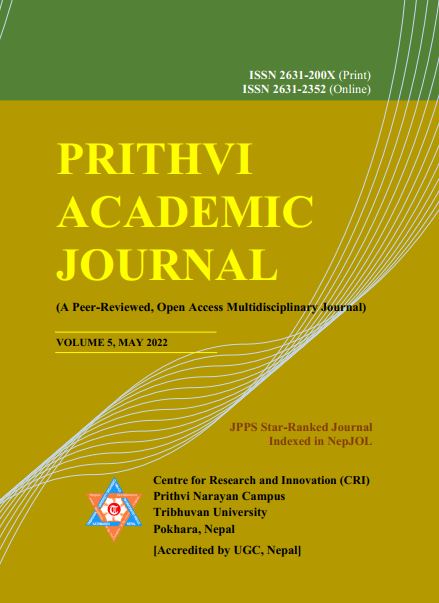The Invasion of Water Hyacinth and Its Impact on Diversity of Macro-Invertebrates in the Lake Cluster of Pokhara Valley, Nepal
DOI:
https://doi.org/10.3126/paj.v5i1.45035Keywords:
Eichhornia crassipes, habitats, IAPs, invasion, physico-chemicalAbstract
Invasion of Alien Invasive Plant species (IAPs) is one of the major drivers for the wetland ecosystem degradation and aquatic biodiversity loss. Among the wetland ecosystems, the freshwater habitats including lakes and streams are more susceptible to species extinction. In the Lake Cluster of Pokhara Valley (LCPV), many aquatic species have been threatened by an abundant occurrence of water hyacinth (Eichhornia crassipes). Thus, this study aims to identity an association of the water hyacinth with different water parameters, diversity and abundance of macro-invertebrates. Water hyacinth is not only correlated with depth, transparency, pH and dissolved oxygen negatively, it is also correlated with temperature and free carbon dioxide positively. A total of 29 species and 26 genera from 21 families and 15 orders of macro-invertebrates were recorded. Among the macro-invertebrates, haplotaxida and diptera were found to be less abundant in the water hyacinth presence (HP) habitat than the water hyacinth absence (HA) habitat. However, the macro-invertebrates were found more abundant and diverse in the HP habitat than the HA habitat (Ranged: HP: 177 to 666; HA: 46 to 483). The abundance of orders like ephemeroptera, odonata, coleoptera, sphaeriida and caenogastropoda was significantly higher in the HP habitats. The direct and indirect effect of water hyacinth on the occurrence of macro-invertebrates and abundance can change the faunal structure of LCPV. Therefore, it is recommended to develop a plan of LCPV to manage the water hyacinth.
Downloads
Downloads
Published
How to Cite
Issue
Section
License
Copyright (c) 2022 Authors and Centre for Research and Innovation (CRI)

This work is licensed under a Creative Commons Attribution 4.0 International License.




